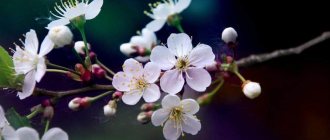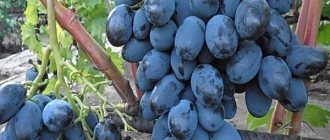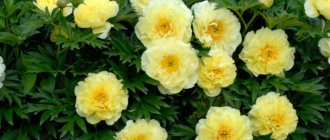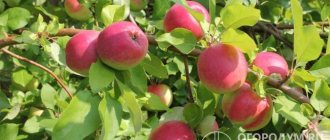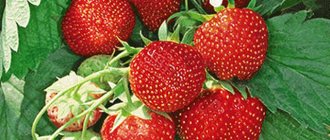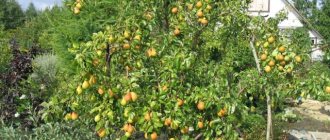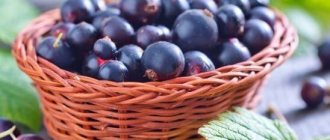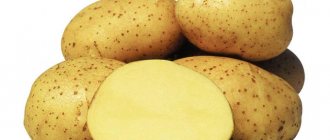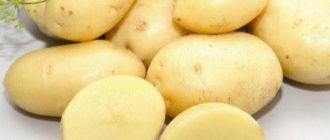Why do you need a haircut?
There are two types of pruning:
- sanitary;
- decorative
During sanitization, all weak and damaged branches and shoots are removed. This procedure allows you to rejuvenate the spruce and provide the necessary nutrition to the remaining healthy branches. In addition, such tree pruning helps prevent the appearance of fungal diseases and parasitic insects.
Decorative pruning is carried out to curb excessive growth and shape the tree crown. If you do not prune the spruce, it produces additional shoots, growing in width and height.
Pruning branches with needles can give the crown a beautiful lush look. To shape the spruce, many gardeners give the crown various interesting shapes: in the form of a spiral, a ball or flames.
How is circumcision different from pinching?
Nursery owners often prefer to pinch rather than prune plants. But in the case of spruce on a personal plot, this work may turn out to be too labor-intensive. Pinching involves the complete or partial breaking out of young shoots, which noticeably slows down the growth of plants. This can significantly complicate the further formation of the crown, but in a small area it may well replace sanitary pruning for young trees under 3 years of age. Pinching is necessary if the tree is planned to be subjected to curly pruning in the future - this way its needles will become as lush as possible.
The right time
Sanitation is usually carried out in the fall before the onset of cold weather. By this time, some of the needles on old shoots fall off, leaving the branches bare. The ends of such branches are cut off, leaving some of the needles. With the onset of warm days, new young shoots will appear from dormant buds.
From the moment of the first frost until the beginning of spring, pruning is not carried out. Otherwise, the wood may freeze and the plant may die.
With the onset of warm days, decorative pruning is carried out. It must be done before the kidneys wake up and begin to grow. On young trees aged 3-5 years, shoots are pinched. Full pruning begins after the spruce reaches the desired size. During the same period, the crown is formed, giving it the desired shape.
During the summer, the decorative shape of the crown is maintained by removing shoots that have grown beyond its boundaries.
Timing of pruning
Coniferous species react differently to pruning, therefore the timing of this procedure is different for them. If of pines is shortened at the “candle” stage, breaking them off manually, that is, approximately in early to mid-June, then spruce trees can begin when the growth period is nearing completion, that is, at the end of summer. It is carried out in such a time frame that the cuttings have time to take longer before winter. After the winter break, you can start pruning again in early spring - before the buds begin to grow. Small Christmas trees can be formed not by pruning, but by pinching the blooming light green “legs”, which, as in the case of pine trees, is done manually. At the end of May - beginning of June, young shoots were tender and fragile, and no pinching tool was required.
Spruce cutting technology
The technology for cutting spruce is largely determined based on the purpose and method of cultivation. This can be a separate decorative tree with an interesting crown shape or a fluffy element for a hedge. In each case, the volumes and methods of work must be calculated individually. To properly trim a spruce, you need to consider general recommendations:
- Pruning is best done in cool, cloudy weather.
- Before work, it is necessary to sprinkle the needles. Otherwise, it may acquire a red tint.
- The first pruning is done when the spruce reaches the age of 1 year.
- When forming the crown, its natural shape should be taken into account.
- To form a lush crown, it is not recommended to remove more than 1/3 of the young shoots.
- Branches that have lost their needles slow down their growth, die and dry out. It is better to remove such shoots immediately.
- For pruning, a well-sharpened sharp tool is used; pruning shears, scissors, files. They must be disinfected before use. After work, rinse thoroughly and dry.
- All work must be carried out wearing protective clothing and gloves. The resin released during the pruning process is difficult to wash off.
Some varieties of species coniferous plants do not require decorative pruning. For example, the crown of a blue spruce has a natural pyramidal shape with dense needles.
Topping
Pinching is a gentle pruning method. It is usually used on young trees with tender shoots. The procedure is carried out in spring or early summer during the period of active sap flow. The pinching technology is as follows:
- The shoot is pinched with the left hand between the index finger and thumb.
- With your free hand, twist the tip of the shoot.
During manipulation, it is necessary to ensure that 2-3 kidneys remain. In order for a lush crown to form, pinching is carried out above the growth bud at the desired height.
Pinching provokes the awakening of new buds. Next season, new shoots will appear at the treatment site, which will also need to be pinched. Thus, unnecessary shoots will curl, allowing the upper growth bud to form.
Formation
Formative pruning allows you to create a lush and dense crown. Using this technology, wood can be given any shape. To do this, attach a wire frame to the tree trunk and remove all unnecessary branches. Small shoots are cut with pruning shears, and large shoots with a hedge trimmer. When pruning, it is important not to damage the dormant buds, from which new shoots will subsequently form. No more than 1/3 of the entire green mass is removed at a time.
Choosing a tool
To shape larger specimens of spruce into a simple cone, you will need hedge trimmers. But a more original cutting method is also known, which is usually used on Christmas tree plantations. There the branches are shortened using a sharply sharpened and very long knife. The worker cuts off the ends of the branches from top to bottom with this tool, like a saber, often working with both hands alternately. From the outside, such cutting of fir trees may resemble an intricate ritual dance.
A tighter haircut is obtained when working with scissors, since the saber knife cuts off only the tops of the branches, trimming the silhouette and making the crown a little fluffier; for a Christmas tree you don’t need more.
Christmas tree producers are interested in their trees growing faster. We need, on the contrary, to restrain growth and, therefore, carry out deeper pruning . This, in turn, causes increased branching, which leads to the formation of a dense green “coat”. True, the natural, tiered shape of the crown is lost. But if you want to preserve it and trim the spruce, forming it by analogy with a bonsai, use pruning shears and manual pinching , since each spruce paw is formed separately, pursuing two goals at the same time: to reduce growth, but at the same time maintain the natural growth form characteristic of the tree. This pruning option requires skill, patience, precision and observation. Each year you evaluate the results of your previous year's pruning and make adjustments.
Important: “rusty” branches must be cut off immediately after they appear, regardless of the season.
It would seem, why such trouble with wild spruce? Despite the greater amount of work compared to miniature cultivars with slow growth, “nurturing” a wild Christmas tree has its advantages. This is full compliance with local characteristics, high resistance to adverse conditions - frost and solar radiation. And high growth rates and vitality are very important for plants that are regularly trimmed. These qualities allow them to easily recover and continue to grow. Well, besides, artistic pruning of a tree is a creative activity, and if you have already mentally pictured to yourself what you want your tree to look like, each pruning will bring you closer to achieving your goal. Agree, this is much more pleasant than immediately purchasing a ready-made large size.
Cultural cultivation of coniferous plants involves constant care for their health and beauty. Pruning pine and spruce is a useful operation that has a positive effect on the condition of the tree.
Haircut patterns
To form a beautiful crown, many gardeners use spruce trimming schemes. It includes the necessary procedure, taking into account the natural shape of the tree and its proportions. In order to get a beautiful and even crown, it is best to use a wire frame.
Conical shape
In order to obtain a cone-shaped spruce, it is necessary that the ratio between the height of the crown and the diameter of the base be 3:2. The procedure will be as follows:
- Install and secure the wire frame as evenly as possible.
- Trim the top shoot, forming a central conductor. The procedure is carried out from the northern part of the tree.
- Remove shoots outside the frame from top to bottom. When cutting, all lines should be rounded. Otherwise, instead of a cone, you can get a spruce in the form of a pyramid.
- After pruning the spruce is completed, protruding branches are removed to give the tree a neat appearance.
A tree formed in this way fits perfectly into almost any landscape composition.
Topiary haircut
The topiary crown shape is most suitable for creating linear plantings and hedges. Most often, pruning is done in the form of a column, cone or spiral. The procedure is as follows:
- Installation of wire frame.
- It is better to use garden shears with a gasoline or electric drive as a tool.
- The top part of the tree is cut completely down to the level of the frame.
- Side shoots are cut to 1/3 or 1/2 length.
Due to the small shape of the tree, topiary pruning must be carefully monitored. Adjustments will have to be made throughout the season.
Ball-shaped crown
A spruce tree in the shape of a ball looks quite interesting in a garden plot. To create this form you need:
- Attach the frame of the desired shape to the tree trunk. In the process of work, you will need to focus on arcuate shapes.
- Trimming is done from top to bottom, moving in an arc.
- After the line is cut, the branches are shaken and the uncut areas are trimmed.
- Trimming is done first on one side, then move to the other.
If you don’t have a frame at hand, you can try making a haircut without it. To do this, first create a cube shape from the crown. Then the corners are rounded, giving the crown a spherical shape.
Creating a fir hedge
A hedge has not only a decorative, but also a protective function. Densely planted plants protect the area from prying eyes. It is known that coniferous plants release phytoncides into the air, which have a beneficial effect on the surrounding climate. A spruce fence planted near the house prevents dirt, noise and exhaust gases from entering the home.
Using compositions of fir trees of different shades, you can create an unusual and spectacular hedge. But most often, Norway spruce is used as the basis for a living fence. This unpretentious plant easily takes root in shaded areas. Spruce tolerates shearing well, so forming a smooth wall will not be very difficult.
The pattern of planting seedlings depends on the type of fence. To form a border about 50 cm high, trees are planted at a distance of 40 cm from each other. The spruce fence is planted in rows at a distance of 1.5-2 meters from each other. The distance between seedlings is about 80 cm.
Spruce trees are planted for hedges at the end of April or in the second half of September. At this time, the trees enter a period of dormancy. Over the next two years, the skeleton of the tree is formed. To do this, the trunk and branches of the tree are secured in a certain position using a solid support, mesh or suspended weights. In the third year after planting, young shoots are pinched.
Landing
Planting is planned in advance, based on the size of adult plants and decorative purposes. Low-growing varieties with an open crown are placed with distances of 2–3 m between plants, no matter how much you would like to plant miniature seedlings more densely. Dwarf Christmas trees are placed every 0.6–1.2 m. Tall and medium-sized trees are planted taking into account their substantial size - no less than 6–10 m apart, depending on the variety.
To plant a hedge, seedlings are placed densely. For example, planting material of Norway spruce is planted at distances of 40–60 cm.
Distances largely depend on appearance - creeping, cushion-shaped forms , as well as plants with a spreading crown, are planted less often than columnar, spherical or narrow pyramidal varieties .
Immediately upon arrival, the seedlings are knocked out of the containers and the root system is lowered into a basin of water for a couple of hours. At the same time, in a hole prepared in advance, they dig a hole 30 cm wider and deeper than the dimensions of the container.
Having taken out the seedlings, inspect them, shake off the substrate a little and trim the damaged roots. An earthen ball with a root system is lowered into the hole and the roots are straightened. Add water and add soil, compacting the substrate to fill the voids and squeeze out all the air.
When planting, make sure that the root collar is at soil level or slightly higher - the soil will invariably settle over time, and the plant will take its rightful place. Along the perimeter of the crown, the soil is mulched with peat or non-woven covering materials, for example, lutrasil, are used.
Care after haircut
All trees that have been pruned require additional care. Even before the procedure begins, it is necessary to carefully inspect the tree. It should have a healthy appearance, the needles should be bright green. You should not subject weak plants with a large number of dry branches or falling needles to decorative pruning. Such a spruce may not tolerate cutting and dry out.
After work, the cut areas should be sprayed with copper sulfate for disinfection. There is no need to treat wounds with garden varnish or special preparations, since spruce trees secrete a resin that has bactericidal properties. The following are carried out as restorative measures:
- watering adjustment;
- additional feeding;
- treatment with growth stimulants.
- mulching the soil.
Watering in the first month after pruning is carried out by sprinkling. Watering interval is 3 weeks. For each tree trimmed, use at least 40 liters of water. Along with sprinkling, you can treat with a growth stimulator. It is added to water for irrigation. The Epin solution is best suited for the crown, and Zircon for the roots.
Fertilizing is done at the end of October. It will help the spruce survive the frosts. A concentrated solution of superphosphate is used as a top dressing. Before each watering and fertilizing, it is necessary to loosen the soil to a depth of 10 cm.
For additional protection from frost, mulch the soil. To do this, you can use straw, fallen leaves or sawdust. Cut branches can also be used as mulch. The protective layer is made small, 15 cm is enough. With the onset of cold weather, some of the needles fall off, creating a natural protective barrier.
Plant pruning is a necessary step in the spruce growing process. It allows you to grow a beautiful and strong tree. It is only necessary to strictly follow the rules for cutting this type of plant.
